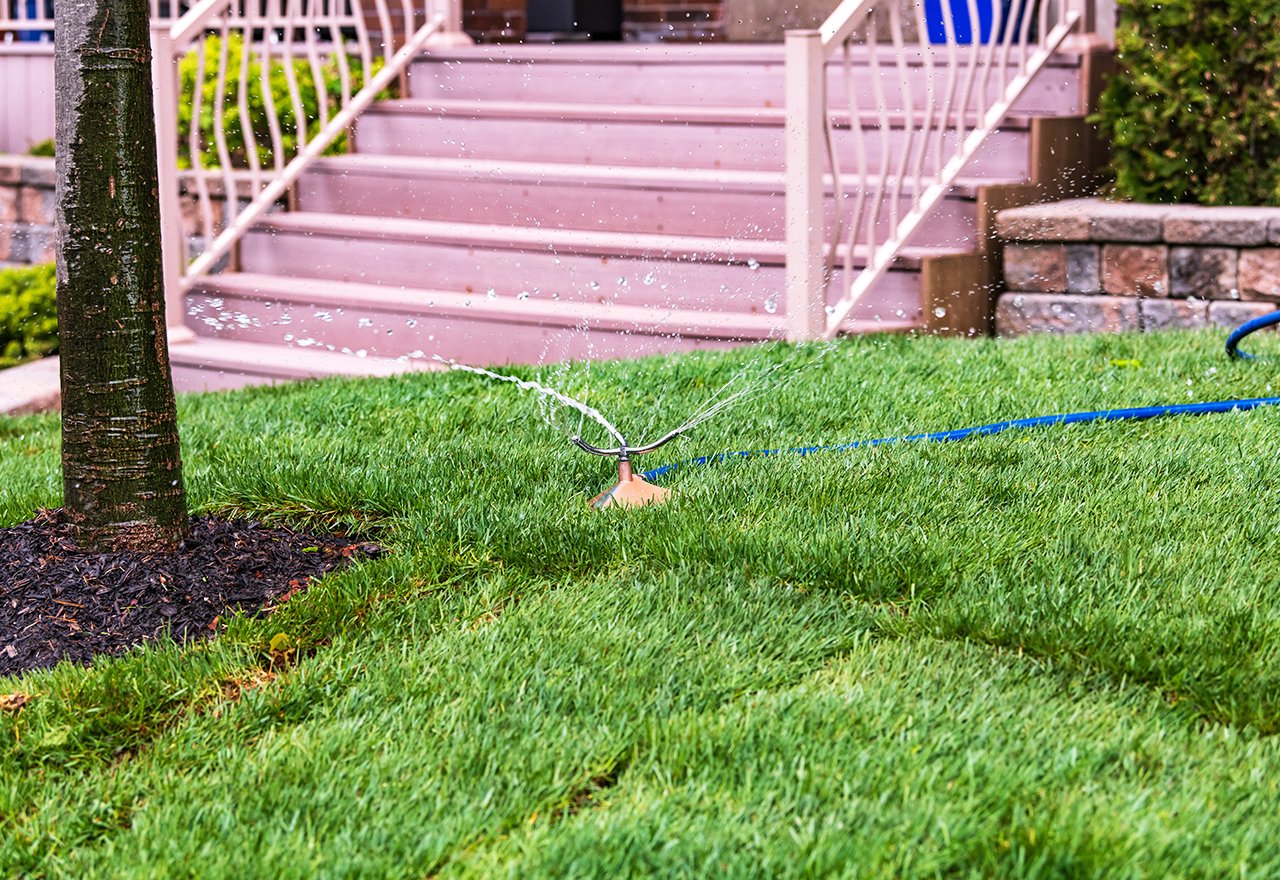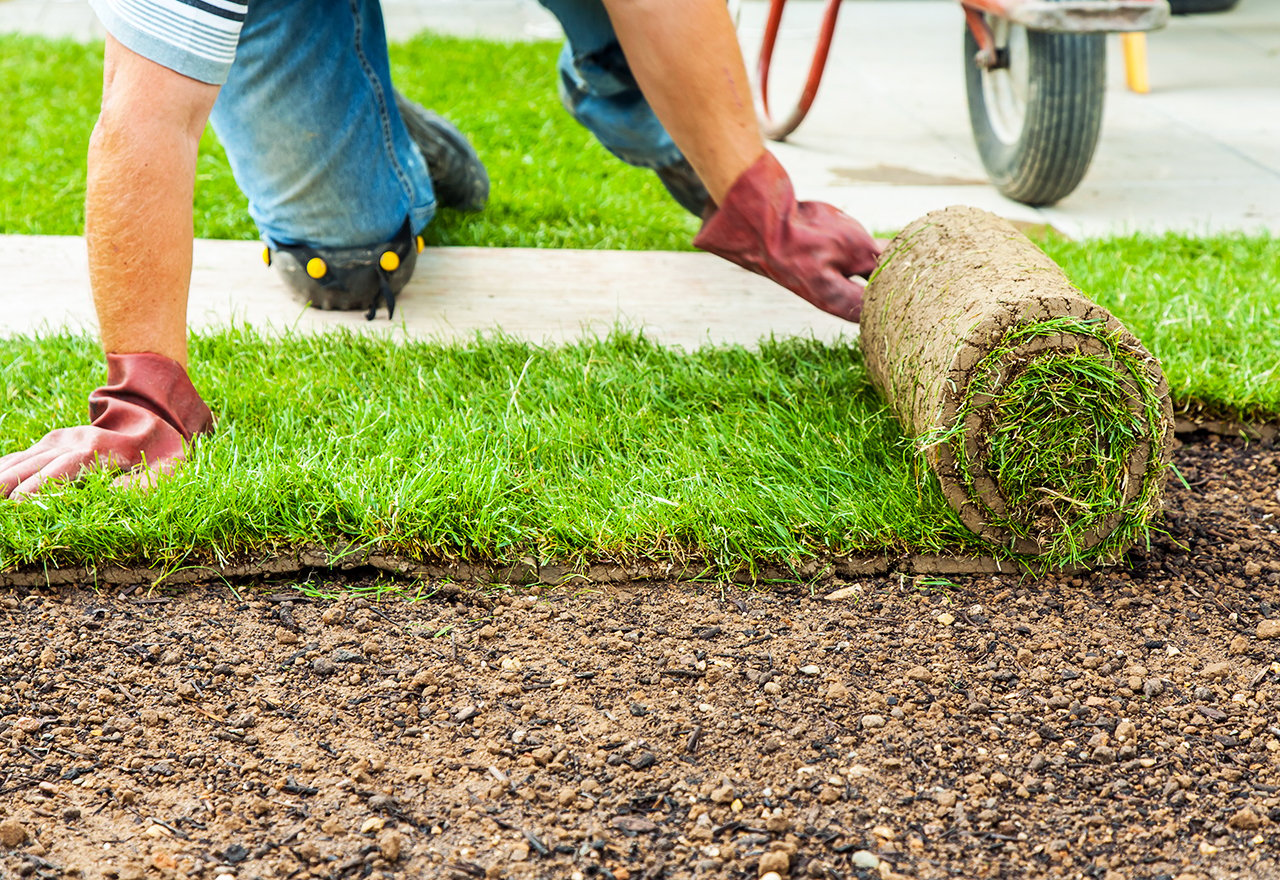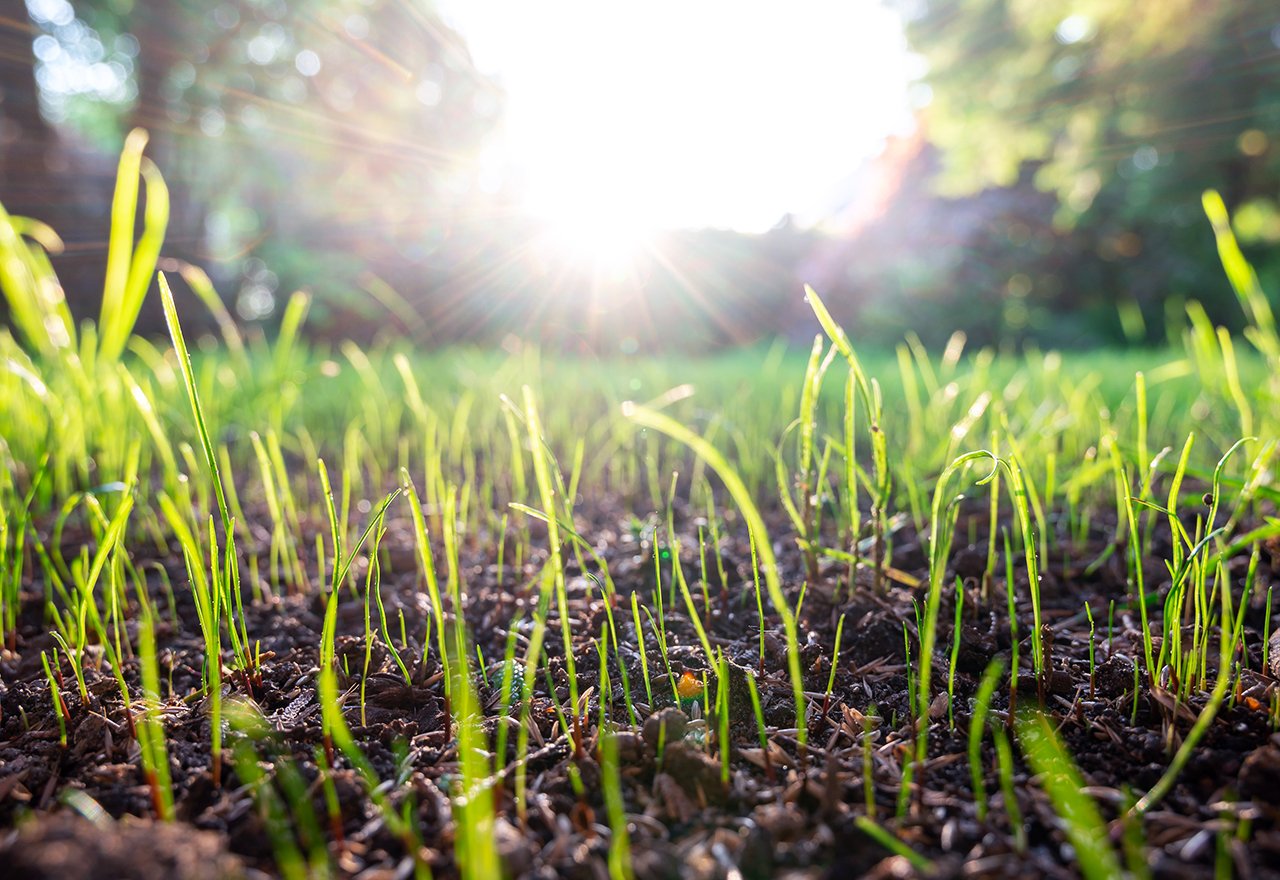Sod vs Seeding a New Lawn
by Maureen Wise, on August 30, 2022

When you make the decision to start a clean slate with your lawn, you have two options: you can either lay down sod on top of the soil or plant grass seed. Both options have drawbacks and benefits.
Before the New Lawn
Before you lay sod or reseed your lawn, you should always start with a soil test. We can perform a Soil Analysis or you can often get a test through your local university extension office. We send our samples to the Brookside Laboratories, which was founded by the father of organic agriculture, William Albrecht. Whatever soil test you end up with, you will have a better understanding of the soil content of your lawn. If you have low organic matter, we recommend Compost Topdressing. If you have low nutrients, we’ll recommend specific nutrient supplementation for what you are lacking. You need to start with good soil before you add sod or new grass seed. Healthy soil is the foundation of a healthy lawn long-term.

Sod Benefits & Drawbacks
The major benefit of laying sod on your lawn is that it’s instant. You don’t need to wait for weeks for the grass to even out and don’t have a muddy mess. There is also a much longer window of opportunity to lay sod compared to seeding. You can’t lay sod on frozen ground, which excludes the Winter months, but every other time of the year is fair game. There are also no erosion or soil stabilization controls that need to be put in place and generally, it's a lot less work on your part.
Be sure to select a sod distributor that is local to your property. Inspect the sod upon arrival and to ensure that it’s not dried out. Also, ask that the thickness of the roots and soil measure ½ to ¾ of an inch. Be sure that your underlying soil is not compacted to ensure that the roots can anchor themselves in their new location. Moisten the undersoil before laying down sod.
Sod does have some drawbacks. Sod comes with a thick thatch layer holding it together like carpet. We know that heavy thatch leads to insect and disease issues. Also, there are limited grass varieties available. Most often, sod is primarily Kentucky Bluegrass, which is not adapted for shade or for our cool season Midwest climate. Sod is also extremely expensive compared to seeding.

Seeding Benefits & Drawbacks
Seeding your entire lawn has a lot of benefits. You can choose the best varieties of grasses and cultivars that are specific to your climate and even your specific soil. For our Midwest bioregion, we always recommend 5% Microclover, 90% Turf Type Tall Fescue, and 5% Kentucky Bluegrass. We sell a pre-made mix of the grass seed in our online store, Tuff Turf Lawn Seed and we also offer bags of Microclover, sold separately. We see great long-term success using this seed mixture and the seeding methods laid out below, better than laying sod. Seeding takes work, but is much less expensive.
The best seeding time in the Midwest is late Summer. The best practice is to broadcast the seed in one direction and then go over it again in the opposite direction. For instance, walk North to South the first time and then East to West the second round. We like to then just run a rake over the seed so that it gets sliced into the soil a bit. It’s important to mulch over the seed with straw so that it doesn’t blow away, the soil retains moisture, makes it harder for birds to eat it, prevents soil erosion and reduces mud. Apply one bale of straw for every 500 square feet of area. Daily watering is also extremely important during the first week.
Seeding does have some drawbacks. It takes at least a month for the grass to be established, meaning that your kids and pets are yard-less for that entire time. It’s also a bit of a muddy ordeal, for sure. Additionally, seeding has a smaller window of time to get established than sod. There is also the possibility of weeds taking advantage of the open soil and intruding on your new lawn. You will need to be diligent to remove any weedy intruders because your lawn will not be ready to compete with weeds yet.
How To Maintain New Lawns
If you go the sod route, we have a few trips to pass your way. It’s very important to help the sod root to the existing soil below it so make sure your soil is not compacted to start with. Additionally, we recommend both Core Aeration and Liquid Aeration to reduce and prevent thatch in the sod. We also really don’t want you to be stuck with an entire lawn of Kentucky Bluegrass. Consider adding more grass varieties to your sod by Slice Seeding in additional grass seed and Microclover.
Both a newly seeded lawn and a newly sodded lawn are vulnerable. They are not at their best and can not compete with weeds or insects. We recommend natural grub suppression in the form of beneficial nematodes or grubgone soon after the grass is established along with Neem Oil application to repel other pests. Additionally, be sure to fertilize your new lawn. We have a few organic fertilizers that we recommend in our online store.












